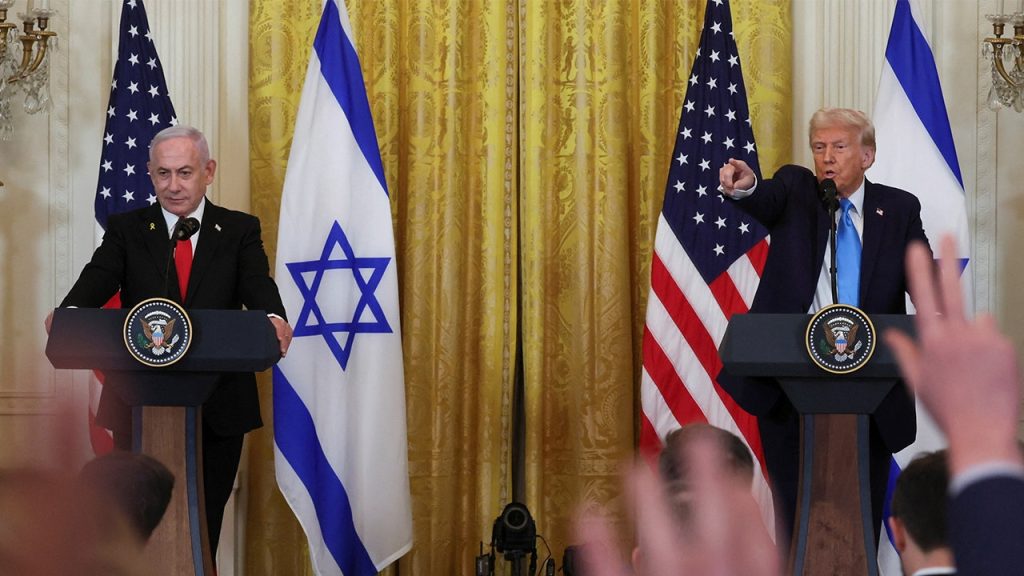President Donald Trump’s declaration to “take over the Gaza Strip,” level it, and subsequently rebuild the area has ignited a firestorm of reactions, with fervent support from some quarters and vehement opposition from others. Trump’s pronouncements, made following a meeting with Israeli Prime Minister Benjamin Netanyahu, outlined a vision of American control over the Strip, with the U.S. taking responsibility for dismantling unexploded ordnance and other weaponry. This radical proposal, characterized by Trump as a necessary step to ensure safety and security, has been met with both applause and condemnation.
A chorus of voices, particularly within Trump’s inner circle and among his supporters, has risen to champion the plan. Former U.S. Ambassador to Israel, David Friedman, lauded the idea as “brilliant, historic,” and potentially transformative for the region. White House officials, including Deputy Chief of Staff Taylor Budowich, echoed this sentiment, emphasizing the need for a new approach to the enduring conflict and the potential to transform Gaza into a thriving hub akin to Dubai. Senator Rick Scott and Congresswoman Beth Van Duyne also expressed their support, commending Trump’s commitment to Israel and his decisive leadership. This wave of endorsements paints a picture of a bold, decisive leader determined to reshape the geopolitical landscape and bring lasting peace to a troubled region.
However, the international community’s response has been far from uniform. Saudi Arabia, a key player in the Middle East, issued a stark rebuke of Trump’s proposal, reiterating its unwavering commitment to an independent Palestinian state. The Saudi statement emphasized the importance of alleviating the suffering of the Palestinian people and upholding their right to their land. This stance underscores the deep-seated complexities of the Israeli-Palestinian conflict and the divergent perspectives on the path to resolution. Furthermore, Hamas, the militant group controlling Gaza, condemned Trump’s statements, characterizing them as a recipe for chaos and tension in the region.
The chasm between these opposing viewpoints highlights the polarizing nature of Trump’s vision. His supporters view his approach as a necessary disruption, a bold move to break the cycle of violence and usher in an era of peace and prosperity. They see Trump as a strong leader willing to challenge the status quo and pursue unconventional solutions. On the other hand, critics view the proposal as a reckless and potentially destabilizing move, one that disregards the rights and aspirations of the Palestinian people and risks exacerbating tensions in the region. Their concerns reflect a deep skepticism about Trump’s motivations and the potential consequences of his actions.
The debate surrounding Trump’s Gaza proposal underscores the profound challenges facing the region and the difficulty of achieving a lasting peace. The competing narratives – one of decisive leadership and transformative change, the other of reckless disregard and potential escalation – reveal the deeply entrenched divisions and the high stakes involved. The future of Gaza remains uncertain, hanging in the balance between these conflicting visions.
The international community’s response, ranging from enthusiastic endorsement to outright rejection, further complicates the situation. The Saudi statement, in particular, highlights the delicate balance of power in the region and the potential for Trump’s actions to disrupt existing alliances and exacerbate tensions. The stark contrast between the support within Trump’s circle and the opposition from key international players underscores the global implications of this proposal and the potential for far-reaching consequences. The future of Gaza, and indeed the broader Middle East, remains uncertain, with the possibility of either a dramatic shift towards peace or a further descent into conflict.

